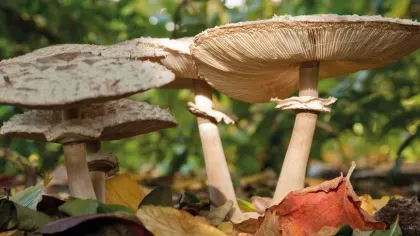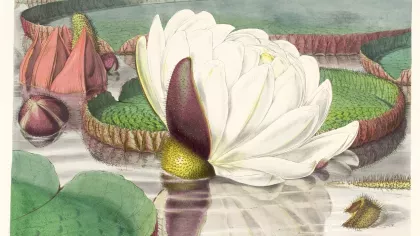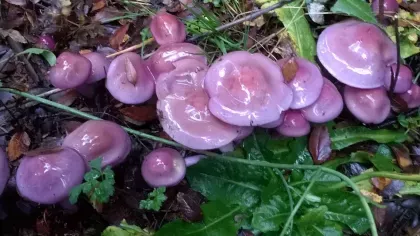3 February 2017
Miss Drake - a skilled illustrator of orchids
In celebration of Kew's Orchids Festival, Julia Buckley looks at the orchid illustrations of Sarah-Ann Drake, a prolific 19th century artist we know little about.

Orchid fever
The gloomy and cold winter days can be brightened with a visit to Kew’s Orchids Festival (4 February - 5 March 2017). Whilst marveling at the beauty and versatility of this diverse range of plants it is worth considering the wonder they inspired during the fervour of orchid-growing in 19th century Britain. Enthusiasts and scientists were anxious to document and illustrate these curious plants, and some highly illustrated publications were produced as a result.
Miss Drake’s illustrations at Kew
One 19th century artist recognised for her orchid illustrations is Sarah-Ann Drake (1803-1857), about whom remarkably little is known.
The botanist and secretary of the Horticultural Society of London, John Lindley (1799-1865), commissioned Drake to draw numerous plant specimens and his Sertum Orchidaceum (1837-1841) boasts some of her most stunning illustrations. Kew is fortunate to hold most of the original drawings prepared by Drake for the volume.
'Ducky' Drake
Drake was born in Norfolk, but through her friendship with the Lindley family she relocated to Lindley’s London address in Turnham Green around 1830. She was affectionately known by the family as ‘Ducky’ Drake. It is not clear in what capacity she was brought into the household (possibly to act as the children’s governess) but her talent was soon recognised by Lindley who set her to work illustrating plant specimens.
Miss Drake and a weighty tome
After Lindley published Sertum Orchidaceum, Drake went on to contribute plates to James Bateman’s The Orchidaceae of Mexico and Guatemala (1837-1843) – a book which was not only famed for its beautiful illustrations, but also held the peculiar honour of being the largest botanical book ever to be produced.
A flair for illustrating all plants
Drake’s illustrations were by no means exclusively of orchids, and she produced numerous other plant images, but it could be said that it is with orchids that she excels. Drake was prolific in her output during a relatively short career, contributing plates to, amongst others, Ladies Botany (1834-1837) and The Botanical Register (1815-1847) – producing an astonishing 1,100 plates for the latter!
Orchid genus named in her honour
In 1847 she returned to Norfolk and married in 1852. On her untimely death in 1857 her name was commemorated in the Australian orchid genus Drakaea. In 2000 a memorial plaque was unveiled to Drake ‘by admirers of her work’ at the parish church in Norfolk where she is buried.
Further reading
Hamilton, R. M. (2000). "Miss Drake" - Sarah Anne Drake (1803-1855) the Botanical Artist: Biographical Details and Finding-lists of her Works. Richmond, B.C. : [the author].
Blunt, W. (1994). The Art of Botanical Illustration. Woodbridge, Suffolk: Antique Collectors' Club in association with Royal Botanic Gardens, Kew.
Fry, C. (2012). The Plant Hunters: the Adventures of the World's Greatest Botanical Explorers. London: Andre Deutsch.
Kramer, J. (1996). Women of Flowers: a Tribute to Victorian Women Illustrators. New York: Stewart, Tabori and Chang.
Rix, M. (2012). The Golden Age of Botanical Art. London: Andre Deutsch.
Sherwood, S. & Rix, M. (2008). Treasures of Botanical Art: Icons from the Shirley Sherwood and Kew Collections. Kew: Royal Botanic Gardens, Kew.


